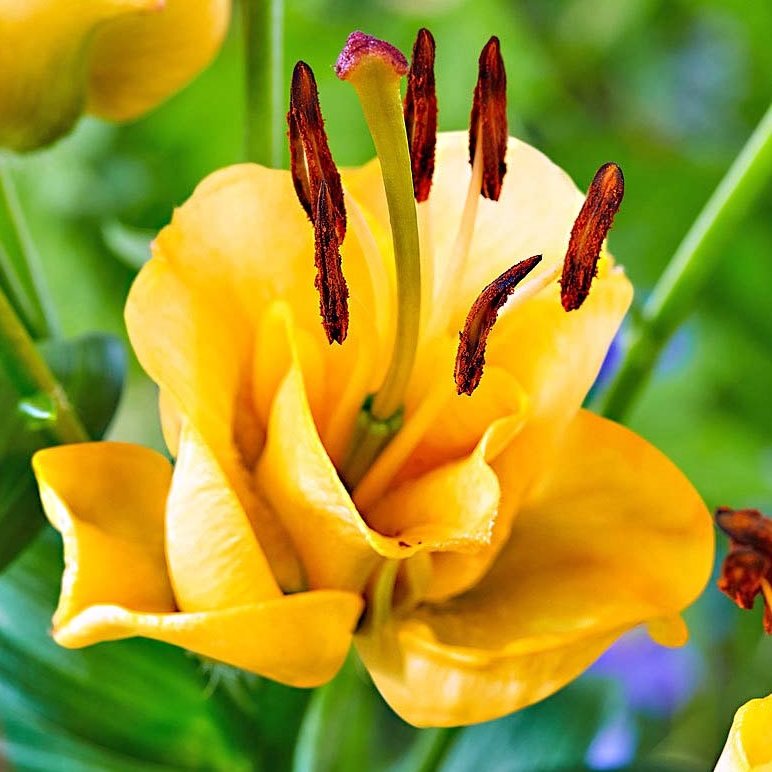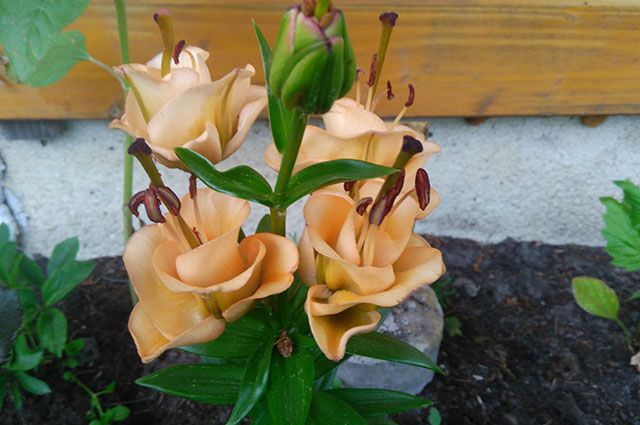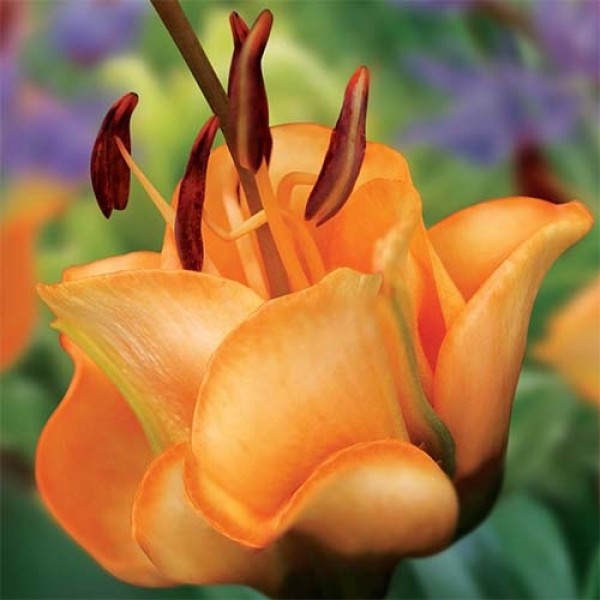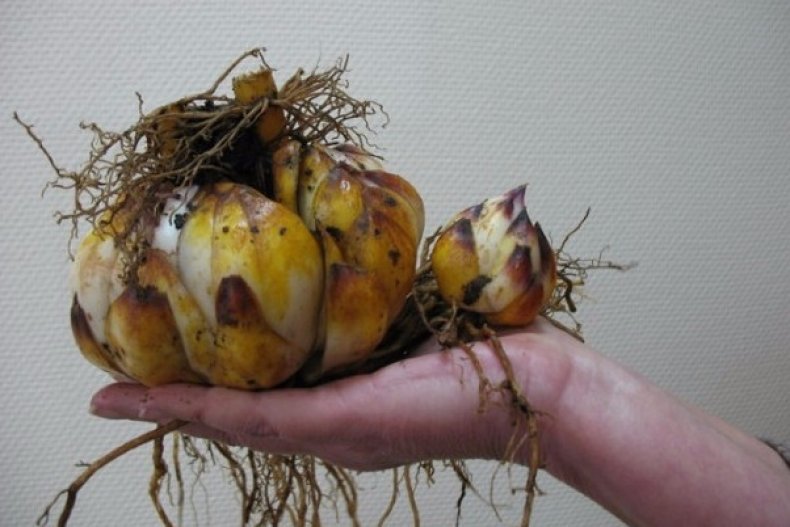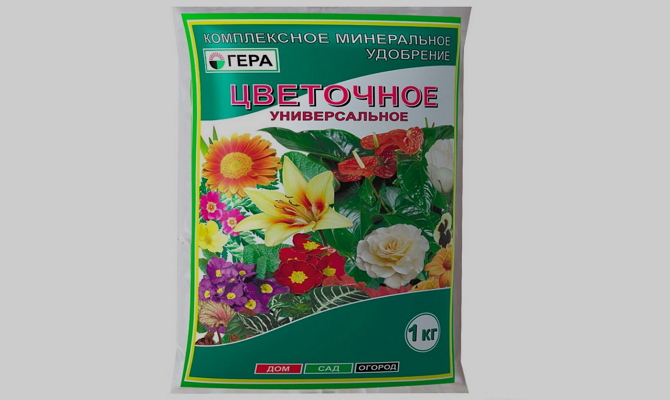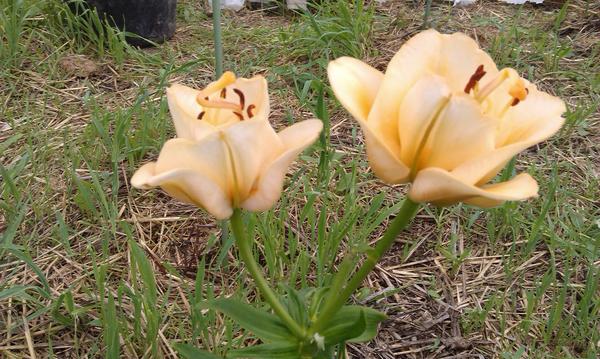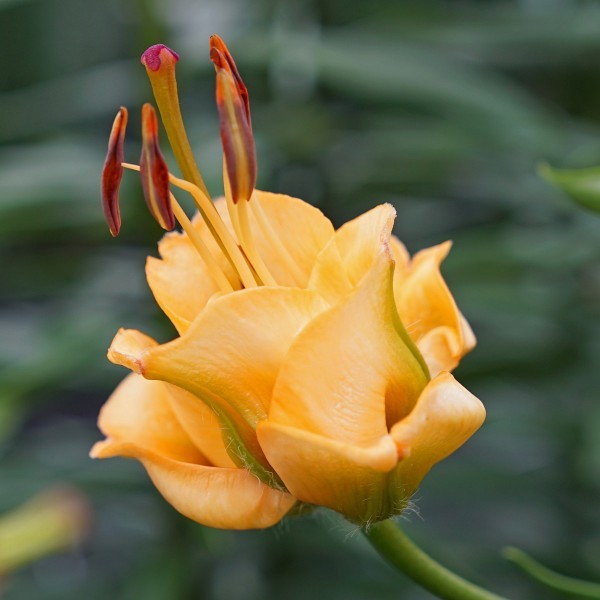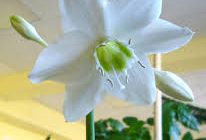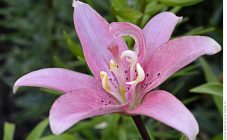Content:
There is no exact data at what point people began to grow lilies. But there is evidence that this flower was cultivated in Palestine as early as the 5th-6th century. For ancient artists, the lily served as a model for creating various ornaments for decorating temples, and musical instruments were made in its image. Stylistic images of this flower can be found on the bas-reliefs of Ancient Egypt, ancient coins found in France and the northern regions of Italy, Germany and Switzerland, on the clothes of the Indians. In the Middle Ages, the image of a lily appeared on the royal arms of France. More often than not, only the heraldic figures of a lion, an eagle and a cross are found.
Currently, more than 100 species of this plant are known. The flower grows mainly in Europe and Asia. About 30 species and many varieties of this beautiful flower are grown in the gardens.
Lily belongs to the Liliaceae family, a characteristic feature of which is the presence of long linear leaves and storage organs - bulbs, corms, rhizomes. The stem of the flower is straight or slightly branched at the top. The leaves usually grow in a spiral, with a bud forming at the end closest to the ground and growing into a bulb. The flower itself is formed by 6 curved petals, which connect and resemble a funnel or bell in shape. Chocolate-colored stamens and pistil extend beyond the flower. Its bottom is covered with glandular tissue, exuding a delicate aroma that attracts pollinating insects.
Creation of the Epricot Fudge variety
Terry lily Epricot Fudge refers to LA hybrids, which were bred as a result of crossing Asian lilies with long-flowered lilies.
As a result, suddenly appeared such a cute mutant with an unusual flower shape. In unopened form, the bud resembles a tulip, and the blossoming flower is very similar to a rose. Actually from here comes the second, common name - Tulip lily.
Lily Epricot Fudge took on high frost resistance and endurance from Asians. It can grow both in the sun and in partial shade. From longiflorum (longiflorum) received a special waxy hardness of the petals and the size of the flowers (slight elongation)
The variety was bred outside Russia and got its name in Latin. In other countries the flower is called Apricot Fudge lily. Free translation of the name into Russian leads to a little confusion. As a result, in different literature, the flower has different names, among which are most often found:
- lily Apricot Fiudge;
- lily Apricot Fuji;
- lily April Fusion;
- Lily Apricot Fudge.
Some even distort the first word of the name, naming the plant lily Apricot Fudge, which does not at all correspond to the original Latin name.
Features of the variety
The Apricot Fudge lily is considered a giant because with proper care, it can grow up to 1 meter in height. It all depends on the size of the bulb - the larger it is, the higher and larger the peduncle. In the first year of planting, the height of the plant can reach 75 cm, which allows it to be grown in the foreground in flower beds and containers in indoor conditions in winter.
The flower stands for a very long time in bouquets when cutting and when creating flower arrangements, due to the density of wax petals. Blooms from late June to August.
The variety of colors of Epricot Fudge lilies is small:
- yellow;
- cream;
- salmon;
- orange;
- apricot.
Lily Epricot Fudge resembles a slightly elongated unopened rose. The flower has 5-6 petals, slightly curved inward, like a tulip. The brown pistil and stamens protrude far beyond the flower itself. When the bud opens, a pistil with stamens first appears, and then the flower itself opens.
The diameter of the flower is from 7 to 10 cm, and the length reaches 13-15 cm. On the peduncle there can be up to 30 flowers at the same time, looking up, and their color changes depending on the degree of opening of the petals. When fully expanded, the tulip lily can be yellow to orange in color, and in the bud it is usually creamy peach or pinkish. All LA hybrids are characterized by a delicate delicate aroma of flowers.
There is another feature that one of the lily's parents, Epricot Fudge, gave as a gift. The description of this hybrid indicates its ability to form bulbs in the leaf axils. Ripening, they fall to the ground and germinate.
Growing
Lilies are grown in several ways:
- seeds;
- scales;
- baby bulbs.
First of all, such flakes are placed in a solution with a dressing agent for 15-30 minutes. To prepare such a solution, you need to take 1 ampoule Maxim (for bulbous and corms) and 2 liters of water. After that, the scales are put on the bottom of a clean dark bag (you can take a bag for garbage), Sphagnum moss, which has a disinfecting property, is laid, then a layer of etched scales and a layer of moss again on top. The bag should be tied up and stored in a cool, but not damp place for several months.
It is required to periodically check the contents for the possibility of dampness and rot. After the specified time has elapsed, from one to several bulbs will grow on the lower part of the scales. They can be planted in a container without tearing them off the scales, and in the spring already in the ground. Steamed soil is required for planting. Alternatively, you can buy soil for violets in the store. Thus, practically out of the garbage, you can provide yourself and others with free seed.
When buying lily bulbs for planting, you should inspect the bottom for the presence of:
- rot;
- external damage to the bulb;
- completely dried roots.
If these signs are present, the bulb is discarded. The bottom should not be sagging inside. Sprouted bulbs are also a disadvantage. You can buy them, but storage in the refrigerator will not save you from further germination; it is better to immediately plant them in a container, for example, in a cut off plastic bottle.
Trim long tangled roots a little before planting. It is not worthwhile to deeply bury the bulb in the container. Due to the peculiarity of the roots of lilies to grow down, if there is not enough space, they will begin to curl and can crawl out to the surface.
Any complex mineral fertilizers with microelements are suitable as top dressing. You can use organic matter (vermicompost, dry chicken, horse manure). In mid-May, the plants are planted in the ground from the pot by the transfer method so as not to damage the roots. The lower leaves should be removed and the trunk should be deepened by 5-7 cm when planting, planted at a distance of 20-25 cm from each other. But it should be borne in mind that return frosts can destroy the sprouted sprout.
If a bulb is planted in the ground, then they do it according to the established rule: the planting depth is equal to the size of the bulbs multiplied by 3.
Another problem may arise: to prevent lily bulbs from germinating during transportation, manufacturers treat them with inhibitors (drugs that inhibit growth). This can subsequently affect the height of the peduncle. As a result, buds can form on a stem 10-15 cm high. Do not be afraid of this, the acquired plant is not dwarf. It will be normal size next year.
Care requirement
In order for the lily Epricot Fudge to please the owner, surprise with its aroma and unusual flowers, a number of conditions must be observed:
- The landing site is sunny and high.
- The soil is loose, nutritious, water permeable (not clay) with a neutral pH.
- Flowers need watering, but after flowering watering should be stopped.
- Before flowering, top dressing with complex mineral fertilizer. After flowering with a fertilizer containing potassium and phosphorus (potassium monophosphate). During the spring - summer season, lilies will need 3-4 feeding.
- In the fall, after pruning, the plants need mulching to protect them from frost.
- Lilies need a transplant every 3-4 years.
Experts note that in general, this variety of lilies is not too picky about care and does not stand out against the background of other varieties.
Advantages and disadvantages
Lily Epricot Fudge has many virtues. The main ones include:
- the unusual shape of the flowers;
- delicate delicate aroma;
- early flowering;
- many at the same time blossoming flowers;
- winter hardiness.
Among the disadvantages, gardeners noticed:
- the plant looks better in a flowerbed with simpler flowers than with other types of lilies (against their background, the flower even loses).
- a small variety of colors.
But this is a purely subjective opinion of some amateur gardeners.
Lily variety Epricot Fudge is not very common in Russia. However, sellers are currently seeing a noticeable increase in interest. It is quite possible that in the near future, this variety will become widespread.
